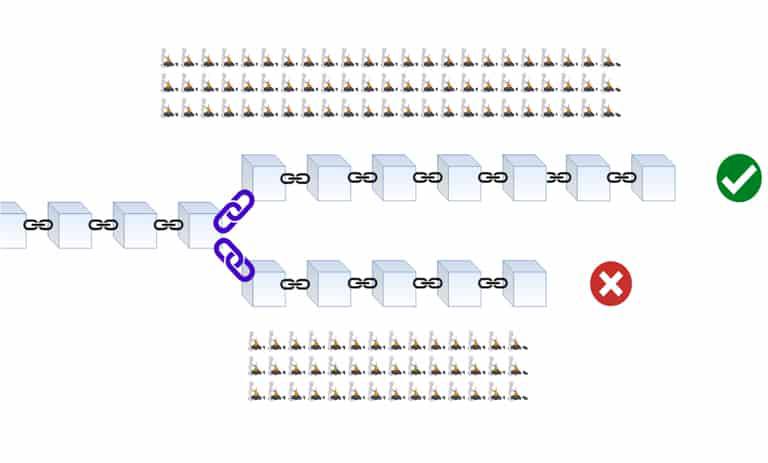EVM - 9. Polygon Hard Fork
ETH-scaling project Polygon completed a hard fork last month in hopes of reducing gas fees, as well as disruptive chain reorganizations known as "reorgs,” according to Coindesk. Let’s dive into the network’s health and performance leading up to and since the hard fork. Has the software upgrade led to lower gas fees as hoped? Have these changes affected any meaningful user metrics, such as volume, activity, monthly active users, or others?
✨Introduction
Forks occur when the algorithm of an existing blockchain is altered or a new blockchain is created. Either a soft or firm fork will do. By contrast, hard splits result in two distinct blockchains that are incompatible with each other. The creation of new cryptocurrencies or tokens is just one consequence among many that can result from forks, which can happen for a number of different causes. Users must have a firm grasp of the process and take precautions to safeguard their funds at all times.
A reorg in blockchain occurs when a large number of blocks are invalidated and replaced with new ones. This happens when competing blockchains are formed due to multiple miners finding blocks at the same time. A consensus mechanism like Proof of Work or Proof of Stake is used to resolve chain splits and agree on a single authoritative chain.
A deep reorg may occur if a malicious miner performs a 51% attack, which allows them to control the consensus mechanism and potentially undo previous transactions. Reorgs can result in the loss or double-spending of funds, so it's important for users to monitor blockchain safety and take appropriate measures to mitigate the risk of reorgs.
🛠️ Method
The goal of the hard fork was to reduce gas fees and minimize disruptive chain reorganizations known as "reorgs." It remains to be seen whether the software upgrade has led to lower gas fees as intended and if there have been any meaningful changes to user metrics such as volume, activity, or monthly active users. It may take some time to observe and measure the effects of the hard fork on the network's health and performance.
Hence I have provided this dashboard to track the aforementioned metrics by on-chain dats since one month befor the date of hard fork luanchs to date(February 24th)
✍🏻 Conclusion
As a whole, the Polygon network is weaker and slower now because of the hard split. The number of everyday users and transactions has decreased while the transfer volume of the native token, MATIC, has increased significantly. The rising price of MATIC and the greater number of transactions are both contributing factors. Average transaction costs on the Polygon network have increased dramatically since the hard fork, in both MATIC and US dollars. Since the hard fork went into effect, the network has higher transaction fees even though it's handling the same traffic as before. Aside from the fact that a sharp increase in fees could mean that the network is becoming more heavily utilized, it also indicates that the hard fork has not succeeded in its aim of lowering gas fees and stopping frequent reorgs.
Furthermore, on February 23rd, Polygon was attacked by a reorg, showing that the hard split failed to achieve its objectives.
Hey there 👋!
Firstly, I appreciate you sticking with it until the conclusion.
I'm Hamed, a civil engineering Ph.D.
student interested in data analysis.
I've made many similar dashboards and visualizations since I started at Flipside in January.
Please take a look at my various contact details and let me know what you think.
About:
-
Author: HaM☰d
-
Discord: 0xHaM☰d#8391
-
Twitter: @arjmandi_hamed
-
Email: h_arjmandi2012@yahoo.com
🔎 Findings:
The above-mentioned metrics were assessed for DeFi, NFT, and swap activities, which are major actions on blockchains. Although the changes are not significant, NFTs and swap activities have seen a smooth increase in transaction count, and all of them have experienced an increase in daily active users.
Furthermore, according to the following charts, the count of daily new users, who transacted for the first time on Polygon, significantly decreased after the hard fork date, and the growth momentum of the new user count has significantly decreased compared to before the hard fork date.

🔎 Findings:
Based on the charts above, which represent daily transaction counts, active users, and paid fees volume, it can be seen that the transaction count and active users of the Polygon network have declined, while the paid fees have dramatically increased after the hard fork launch date, peaking at over 250K on February 26th.
Additionally, according to the following charts, the momentum of the transaction count has not seen significant changes, while the growth of paid fees volume has been sharp since the hard fork launch date.